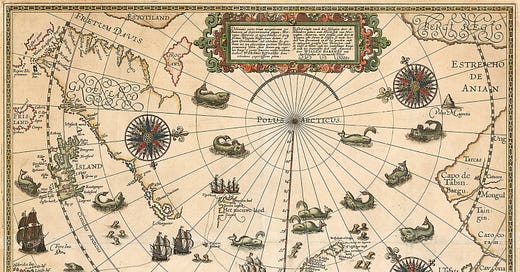Welcome to
. What follows is part of our Terra Phantasma series, where we venture in search of the mysterious ‘phantom lands’ that have appeared on maps through the ages. For the full map of Cosmographia posts, see here.In his famous 13th century travelogue, Marco Polo wrote of a vast and mysterious gulf off the coast of Asia. According to his account, this waterway lay near a land called Ania, and was “so extensive and the inhabitants so numerous, that it appears like another world.” Little did he know then that his enigmatic description would launch one of the greatest obsessions in the history of European exploration.
It's unclear exactly how it began, but within a few centuries of Polo’s description, European cartographers and explorers began to equate his gulf with the idea of a Northwest Passage — a potential sea route connecting the Atlantic and Pacific to the north of the American continent. The prospect of such a passageway was enormously tantalising.
From the late 15th century, European nations had been conducting ever increasing trade with Asia, but the existing routes posed immense challenges. Overland transport was arduous and costly. The sea route around Africa's Cape of Good Hope, originally named the Cape of Storms by Portuguese explorer Bartolomeu Dias in 1488, was long and notoriously dangerous. A Northwest Passage would provide a much shorter and safer route, bringing incalculable wealth to whichever country could find and control it.





